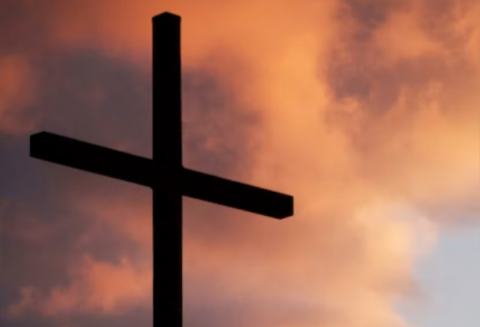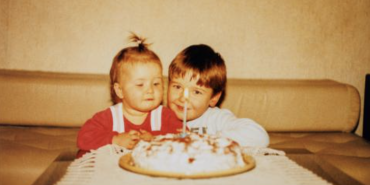Half a Message

He was buried… (1 Corinthians 15:4)
One of my favorite Easter illustrations comes from Lloyd John Ogilvie, former Chaplain of the United States Senate. He tells of how the outcome of the Battle of Waterloo was communicated to all of England. A written message was sent from Belgium on horse-back, then by ship across the English Channel, and then by semaphore from the ship to the shore. The message was simple, it had four words. But as the semaphore signaler moved his arms and flags to spell out the message, only the first two words were communicated before a dense fog rolled in: “W-E-L-L-I-N-G-T-O-N D-E-F-E-A-T-E-D”. The watchman in the tower of the Winchester Cathedral passed on the sad news and in the next 24 hours it spread across the land, leaving England profoundly disappointed and gripped with fear. The great Duke of Wellington and all the armies of England had been defeated!
The next day the fog lifted and the whole message could be completed. The two missing words lost in the fog were T-H-E E-N-E-M-Y. The whole message was “Wellington defeated the enemy.” Disappointment was replaced with celebration; fear with rejoicing![1]
Good Friday provides us with half a message, it’s the first half of 1 Corinthians 15:4, “he was buried”.
Yes, Jesus laid down his life for us. Because of his great love, he endured the scorn and shame of the cross. This makes him a sacrificial Savior. But, glory to God, this is only half the message. The full message of 1 Corinthians 15:4 is - “he was buried” and “he was raised”!
There is a lonely grave in London. For a long time, it was completely neglected. Weeds grew over it until the Soviet Embassy later built a fence around it and polished the gravestone. But even so, it is scarcely visited by anyone. Nobody puts a flower on it. Nobody sheds tears near it, as a token of affection. It is the grave of Karl Marx: here, “he was buried.”
There is another tomb that is not private, and is certainly not a lonely site. In the first century, the Roman Emperor ordered this tomb filled with concrete and raised a pagan temple to cover the site. In the early 300s the temple was demolished and a church was constructed instead. Thousands of pilgrims flock to this location every day. People come to worship, to linger, to lay tributes, to shed tears of affection. Tradition tells us that Jesus was buried in this place at the Church of the Sepulchre in Jerusalem: here, “he was buried” AND “he was raised”.
Phillips Brooks, author of the Christmas Carol “O Little Town of Bethlehem”, writes of Easter:
Tomb, thou shalt not hold Him longer;
Death is strong, but life is stronger;
Stronger than the dark, the light;
Stronger than the wrong, the right;
Faith and hope triumphant say,
He was raised on Easter day.[2]
Stan Reeder is the regional director of the USA/Canada Region.
[1] Lloyd John Ogilvie, “Silent Strength for My Life: A Devotional for Daily Living” (Irvine, CA: Harvest House Publishers, 1990) April 6.
[2] Phillips Brooks, “Tomb, Thou Shalt Not Hold Him Longer” published in Christmas Songs and Easter Carols, (New York: E. P. Dutton, 1903). Last line slightly altered for this devotional.




